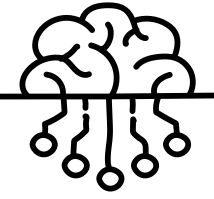Article
AI in recruitment: 3 key challenges solved

Cutting-edge artificial intelligence (AI) solutions are primed to solve age-old hiring challenges, helping HR leaders increase efficiency, improve time to hire, and enhance the candidate experience. Understandably, many HR leaders are overwhelmed by the amount of noise surrounding AI. How and where can they use AI in their talent management strategy to improve outcomes? What can it do for them?
AI can be customized to your organization’s needs. It doesn’t have to be sweeping; in fact, our view is that AI adoption should be incorporated incrementally. The first step is to identify and prioritize current challenges in the end-to-end recruiting and hiring process to identify potential opportunities for applying AI. Below are three common recruiting and hiring challenges and corresponding AI solutions to address them.
Challenge #1: Strategic recruitment
Recruiters struggle to know where to find unique talent, especially for niche or specialized roles. They also have difficulty marketing effectively to those target candidates—for instance, crafting a compelling employee value proposition.
76%
of hiring managers say attracting the right job candidates is their greatest challenge
Source: LinkedIn

How AI can help
To find the right candidates, organizations can leverage AI tools to:
Identify and source candidates with unique skillsets: One of AI’s strengths is its ability to process and analyze data without bias (provided it has been trained on unbiased data sets). AI tools can scan through extensive online databases and social media platforms to identify candidates that match specific job qualifications, paying special attention to unique or high demand skills. This not only helps in diversifying the talent pool but also ensures that the recruitment process is inclusive of all potential candidates.
Get market insights: AI platforms can analyze job market trends, competitor hiring activities, and salary benchmarks to provide recruiters with strategic recommendations for talent acquisition. This enables organizations to craft stronger, more compelling employee value propositions and attract top talent.
Challenge #2: Skills-based candidate evaluation
While 75% of recruiters say skills-based hiring will be a priority for their organization in the next 18 months, only 64% feel they can accurately assess a candidate’s skills today. This inability results in lengthy evaluation and selection processes which often lead to missed opportunities as candidates accept other positions.

How AI can help
To address these challenges, organizations can leverage skills-based candidate evaluation AI systems to:
- Screen resumés: AI can extract relevant resumé skills and experiences and match them with job requirements, which can quickly weed out unqualified candidates and save HR leaders countless hours.
- Analyze data from gamified assessments: AI can help speed up the analysis and interpretation of data collected during gamified assessments (like interactive challenges or simulations) that some organizations use to evaluate candidate skills, abilities, or problem-solving capabilities. For instance, AI can use algorithms to efficiently process behavioral indicators like decision speed, strategy, and adaptability. It can also identify patterns in data points to predict candidate success in specific roles and offer insights that might not be apparent through traditional assessment methods.
Challenge #3: Improving candidate engagement and experience
Candidate experiences that include consistent, timely, and personalized communication throughout the hiring process are critical for attracting top talent—but often require a significant investment of time and resources.
ONLY 3 IN 5
employees describe the application process as positive

How AI can help
Keeping candidates in the loop through strategic AI-powered communication can increase transparency and improve candidate experience by:
- Communicating through AI chat bots: AI-powered chatbots equipped with Natural Language Processing (NLP) can answer questions, provide application status updates, schedule interviews, and collect feedback, allowing candidates to receive quick answers and freeing up recruiter time for other activities.
- Gathering candidate feedback: AI tools can analyze feedback from candidates about the hiring process, including their experience with the organization’s recruitment procedures and interactions with recruiters. This feedback helps in identifying areas for improvement and enhancing the overall candidate experience.
- Predicting success: AI can generate predictive models to forecast which candidates are likely to succeed in a given role by analyzing historical data on successful hires and employee performance, improving retention rates.
Potential pitfalls for AI in recruitment
AI tools are not perfect. During implementation, it’s important to be aware of the potential risks and implement processes to mitigate them.
- Privacy: Make sure your organization is clear and transparent on its collection and usage of candidates’ personal data.
- Candidate experience: While AI communication can help keep a candidate updated, it can be frustrating if their human interaction is limited. Make sure your recruitment process retains a personalized touch.
Before leveraging AI to improve the recruiting and hiring processes, it’s important that organizations develop and clearly communicate their AI policies. Doing so fosters accountability, mitigates risks, and ensures alignment with regulatory requirements, ultimately safeguarding both the organization and its stakeholders.

